 Prehistoric Peru: (The Land of the Four Quarters) Prehistoric Peru: (The Land of the Four Quarters) It is a peculiar fact, common to many ancient ancient cultures, that the oldest civilisations were the most advanced, at the same time as possessing the highest style of art and mechanical skill. This is true of Peru. Baldwin says of Peru in his 'Pre-historic Nations'; 'The oldest structures were attributed to bearded white men, who it is said, worked stone with iron implements brought from their own country. The traditions call them 'sons of the sea'. It is a remarkable fact, not generally known, that the Incas worked iron mines on the east side of Lake Titicaca. (see introduction to Popl-Vuh p.224). Planet worship, temples of the sun, and a great knowledge of astronomy existed in Peru at a very early period. Montesinos and De Bourbourg say the Peruvians had an accurate measure of the solar year, and a knowledge of the art of writing, together with paper made of banana leaves at least 1800 years before our era'.(2)
| Featured Peruvian Locations: |
 Caral-Supe Complex. Caral-Supe Complex.At 2,600 BC, this is the oldest centre of civilisation in the Americas. A quipu (the knot system used in Andean civilizations to record information) found on the site testifies to the development and complexity of Caral society. The city’s plan and some of its components, including pyramidal structures and residence of the elite, show clear evidence of ceremonial functions and monumental architecture, including six large pyramidal structures. |
 Chankillo Landscape Observatory Chankillo Landscape ObservatoryThe Thirteen Towers of Chankillo run north to south along a low ridge within a fourth-century B.C. ceremonial complex in north coastal Peru. From evident observing points within the adjacent buildings to the west and east, they formed an artificial toothed horizon that spanned the annual rising and setting arcs of the Sun. At present, the culture that made them has not been named.
|
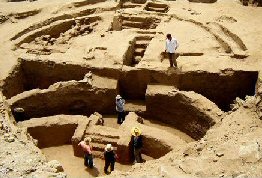 Sechin Alto complex - This almost unnoticed U-shaped ceremonial complex is one of the largest of all early monuments in the Americas. It includes both a colossal, stone-faced platform which stands 40m high and measured 300m x 250m at the base, and the large sunken plaza called the 'Serro Sechin' with architectural resemblances to both Tiahuanacan culture to the south and Olmec remains from the north. Sechin Alto complex - This almost unnoticed U-shaped ceremonial complex is one of the largest of all early monuments in the Americas. It includes both a colossal, stone-faced platform which stands 40m high and measured 300m x 250m at the base, and the large sunken plaza called the 'Serro Sechin' with architectural resemblances to both Tiahuanacan culture to the south and Olmec remains from the north.The Plaza in the photo (Left) is dated at 3,500 BC, other structures have been found beneath it, making it one of the earliest of its kind in the Pre-Columbian Americas. (5) |
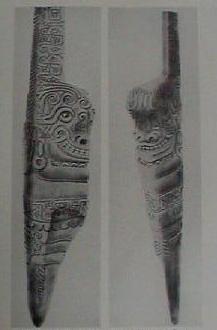 Chavin du Huantar - Capital of the Chavin culture. Chavin du Huantar - Capital of the Chavin culture.Chavin du Huantar, is an unusual complex of steeply walled platforms, honeycombed with stone-lined passages surrounding a sunken plaza. It is unique amongst Pre-Columbian temple groups. The principle edifice, called 'The Castillo' is faced with cut-stone blocks in courses of varying widths. Inside the core are at least three irregular storeys of stone-lined galleries, chambers and ventilating shafts. There are still several engraved obelisks as Chavin du Huantar. Perhaps the most incredible (Right), called 'El-Toro' (the Bull), or 'Lanzon' (the Lance), was originally situated in the centre and deep in the underground catacombs at Chavin de Huantar. The top of it, at 4.5m, protruded through the ceiling, and the floor above. |
|
|

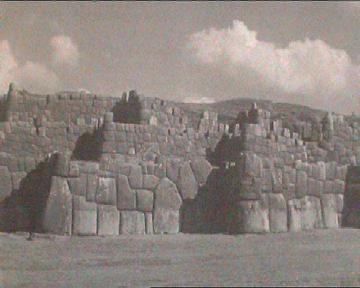

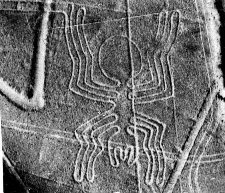
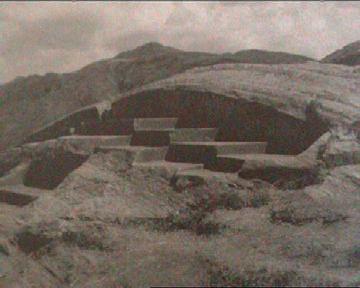




No comments:
Post a Comment
Note: Only a member of this blog may post a comment.